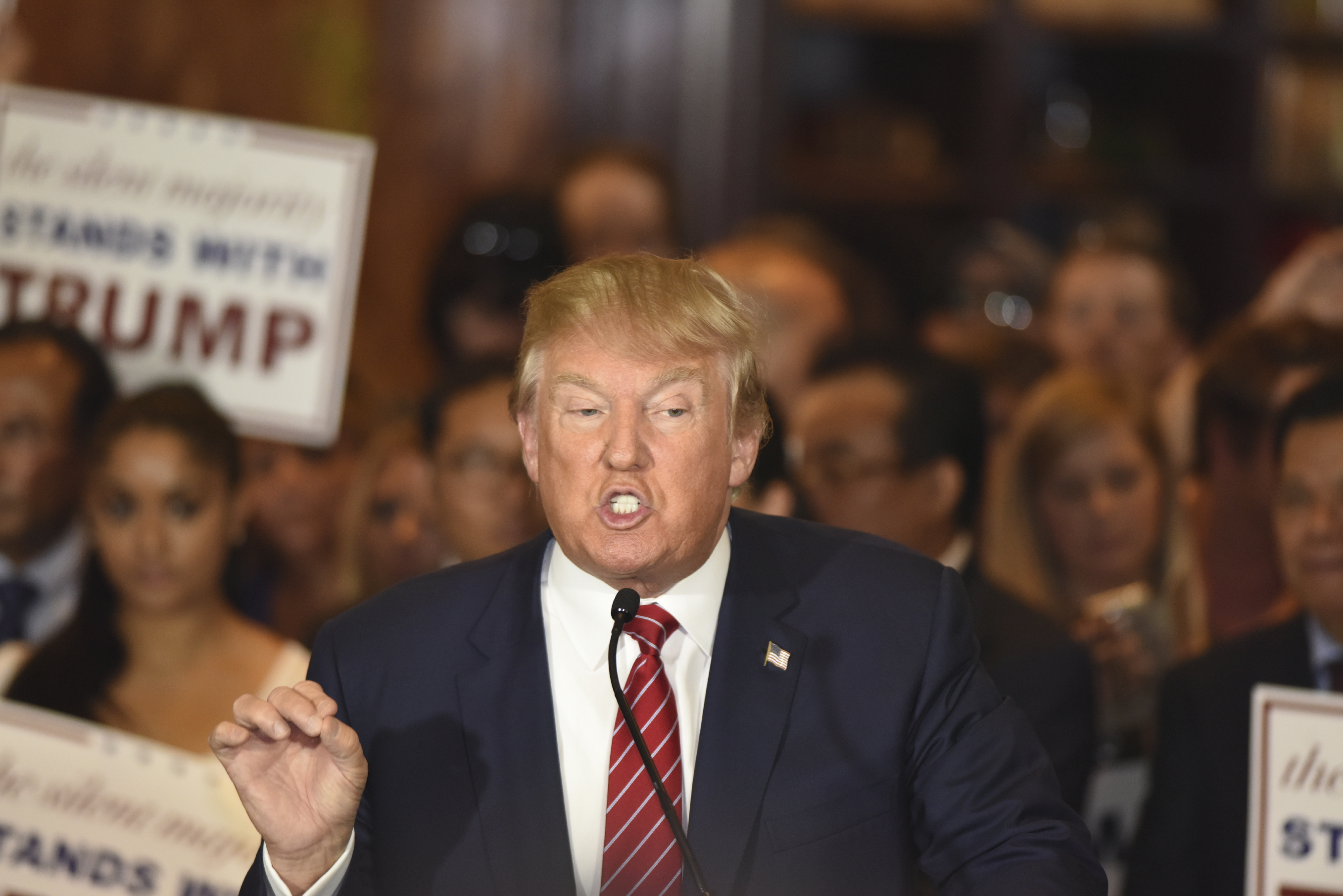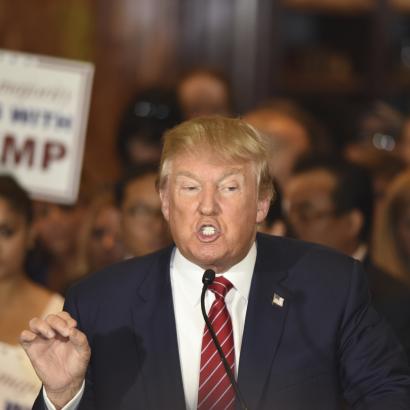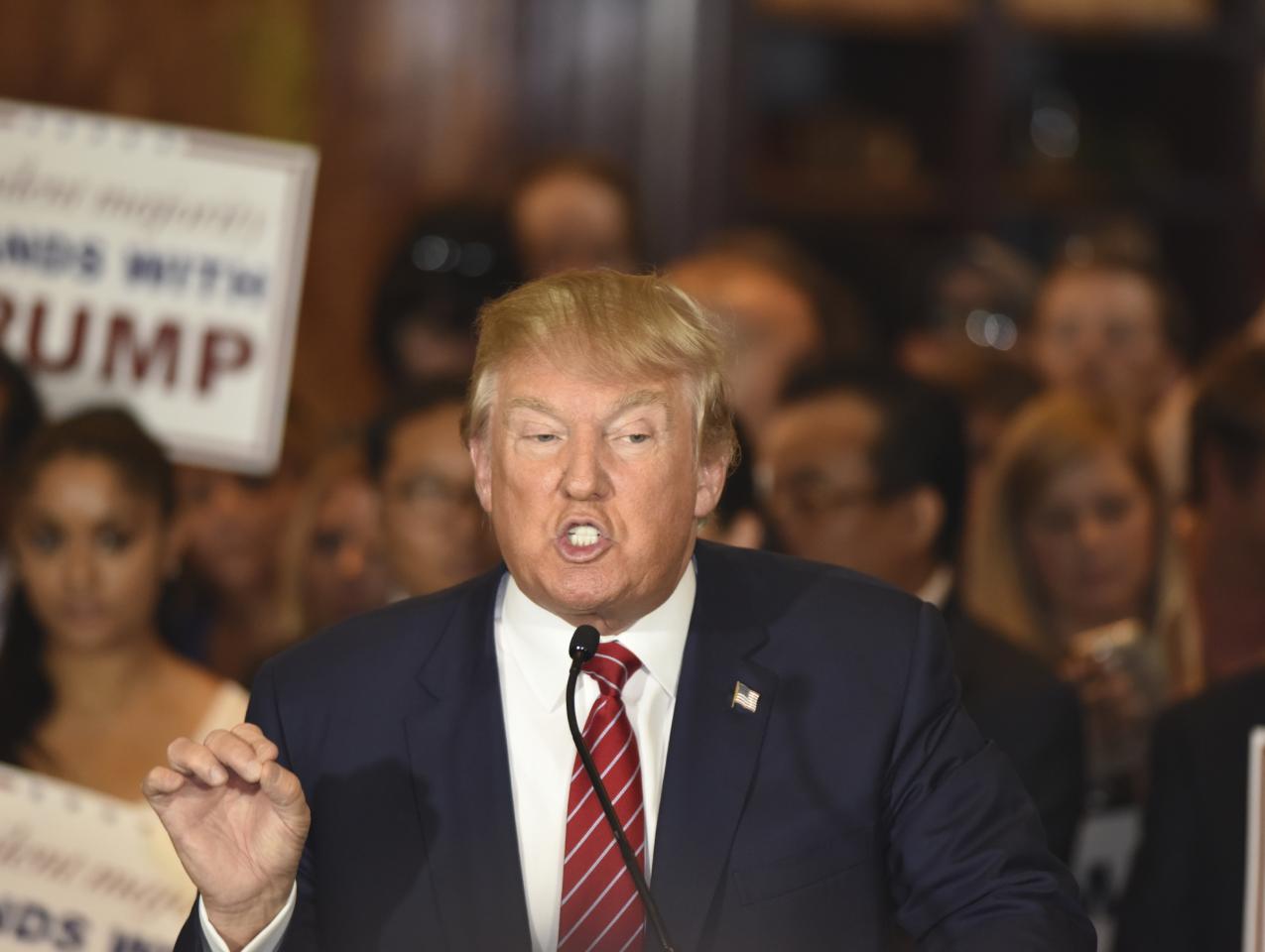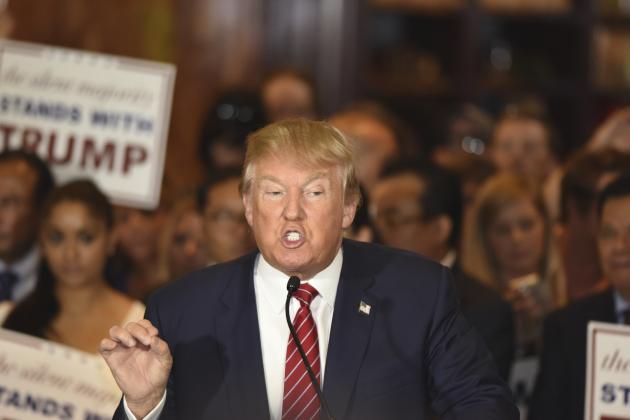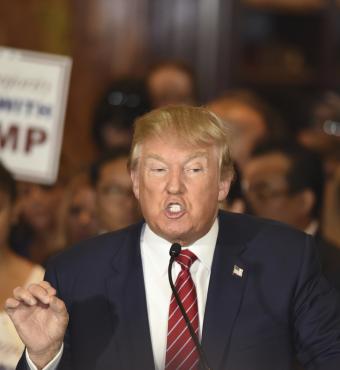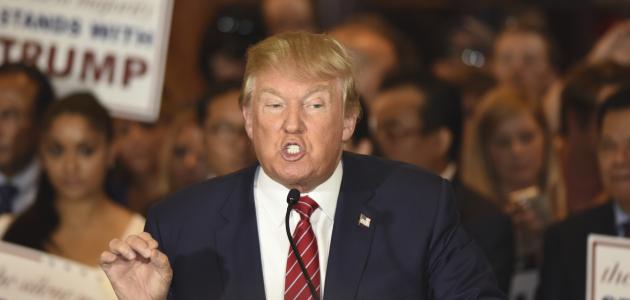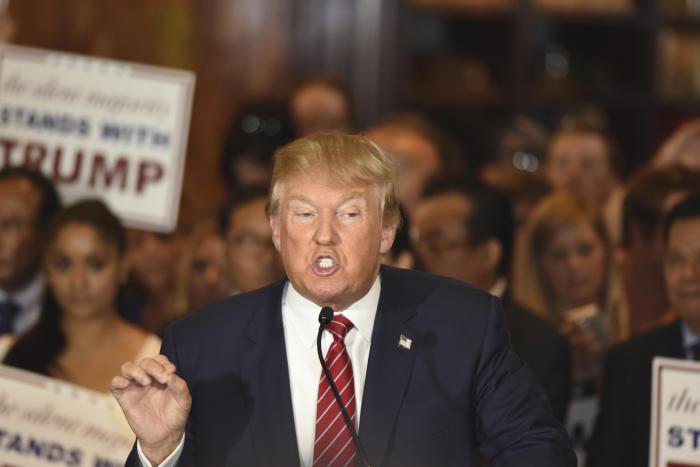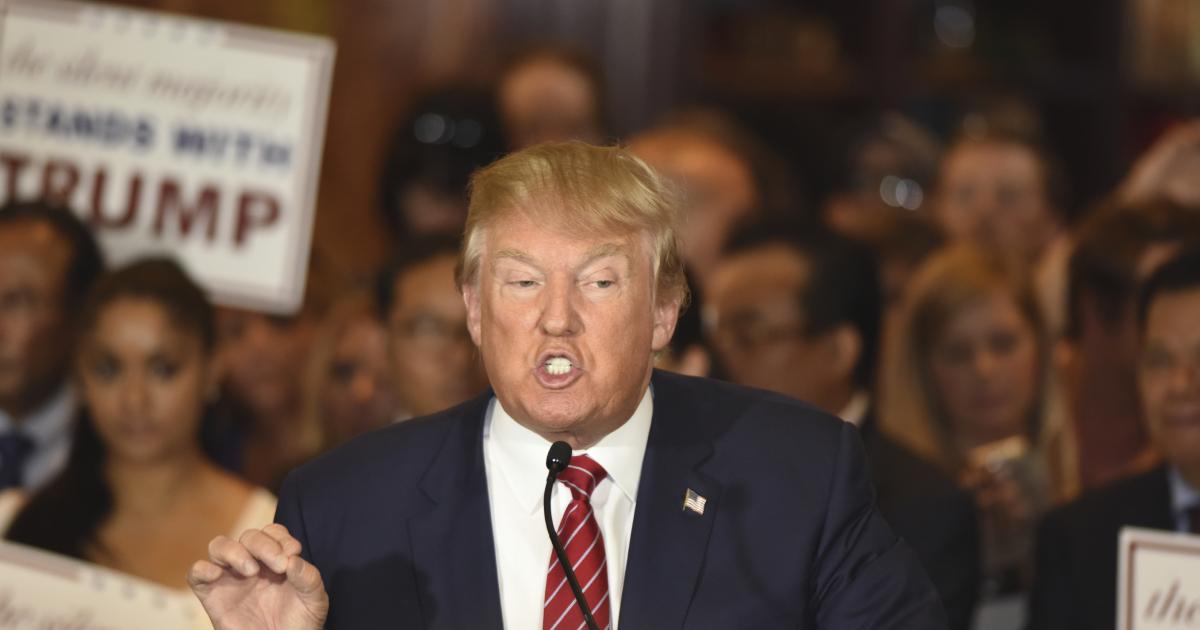Editor’s note: This essay is adapted from Morris P. Fiorina's new book Unstable Majorities: Polarization, Party Sorting, and Political Stalemate. He was interviewed recently by the Wall Street Journal.
“American democracy is doomed.” So said Matthew Yglesias a year before the 2016 presidential election. “America has never been so ripe for tyranny,” opined Andrew Sullivan six months before the election. The day after the elections, David Remnick pronounced the results, “An American Tragedy.” In mid-December, Robert Kuttner asked, “Can American fascism be stopped?” A few days after the inauguration, Dennis Prager said, “America is currently fighting its Second Civil War.” Soon after, David Frum outlined his fears in an article titled “How to Build an Autocracy” and Ezra Klein offered advice on “How to Stop an Autocracy.”
So, in the judgment of various journalists and politicos, the United States is on a fast track to autocracy, fascism, civil war, and ultimately doom. This stream of alarmist commentary shows no signs of abating. Only eight years after an election about “hope and change,” many would describe the present mood of the country as one of fear and change.
Although more unnerved by the actions of Donald Trump to date than by those of any other president in my lifetime, I am less pessimistic than commentators like those quoted above. Four reasons underlie my belief that the country is not perched on the brink of the abyss.
First, as I explain in my book, in broad outline the 2016 voting patterns were not that different from those of 2012. In our electoral system, small changes in the vote can produce major consequences in institutional control and public policies. Knowing that, one cannot assume that an election outcome that is consequential implies that the electorate or some large segment of it intended those consequences. The evidence so far leads me to the preliminary conclusion that the most negative characterizations of the electorate—racist, sexist, fascist—are reflections of disappointment and frustration more than evidence. Americans who voted for Barack Obama in 2012 did not vote for Donald Trump because their moral character had degenerated over the course of the intervening four years.
Second, after the elections a teacher asked plaintively, “What can I tell my students?” Daniel Kevles, a wise historian, answered, “The most important thing you can tell your students, Jessica, is that we have worked through these upheavals before and although the road forward was often rough we managed in the process to enlarge the reach of the American dream.” Some may dismiss such sentiments as mere platitudes, but such dismissals reflect ignorance. One of the unfortunate consequences of the demise of survey courses on American history in our schools and universities is the widespread ignorance of the extent of conflict and violence in this country’s history. Racial violence is taught, but rarely ethnic violence and labor violence. The disagreement and disorder that characterize politics today are not historically unique. On the contrary, they are of a lower order of intensity even compared to the disruptions of the 1960s. Kevles’s observation reflects historical knowledge, not just hope.
Third, as political theorist Francis Fukuyama argues, “America’s institutional system is stronger than portrayed.” Over the decades, political commentary seems to alternate between fears of an imperial presidency on the one hand and of a president fettered by institutional constraints on the other. Even a Republican Congress, a predominantly Republican judiciary, and Republican appointees in the bureaucracy will not automatically bow to any president’s orders. Our institutions are not as fragile as many fear. They have lasted some two centuries and have frustrated presidents throughout our history. There is no reason to believe they will not continue to do so, particularly as the disarray of the Trump administration mounts.
Fourth, and related to the first, I agree with journalist Robert Merry’s observation in The American Conservative: “When a man as uncouth and reckless as Trump becomes president by running against the nation’s elites, it’s a strong signal the elites are the problem.” Why pin the blame for Trump on the ordinary citizen? Many of them might reasonably say, “My real income has not increased in forty years through Democratic and Republican administrations and my children face bleak futures, but you ignore our plight and your policies contribute to the demise of our communities. You fight political wars over social and cultural issues that only slivers of the population care about while ignoring the things that affect the daily lives of tens of millions of us. Meanwhile, Republican and Democratic administrations have spent trillions of dollars and destroyed thousands of our soldiers’ lives in the longest wars in American history, which you seem to have no idea about how to end and may even intend to extend. What have you experts done for us lately?”
I struggle with how to respond to grievances and questions like these. The socioeconomic transformations occurring in the United States and around the world have created problems that call into question old solutions and cut across political coalitions. One might naively think that, in response, a healthy party system would show more creativity, but the parties have not become more creative. The Republicans attempt to hold together an electoral coalition going on four decades old that seems increasingly outdated, while the Democrats can think of little more than identity politics and demographic change to raise them out of minority status. Small wonder that 40 percent of the American citizenry declines to pledge allegiance to either party.
Can the Status Quo be Destroyed?
Trump might play a positive role as a de-sorter, someone with the potential to disrupt the sorted parties that underlie much of our current political discontent and possibly even begin the construction of a new electoral coalition. By taking positions on trade, entitlements, and foreign policy that violate Republican orthodoxy, Trump might drive a wedge between Republican factions. By supporting a big infrastructure program he might drive a wedge between the gentry liberals and the blue-collar factions of the Democrats. Such possibilities seem less likely now given the multiple missteps of the new administration. Thus far Trump arguably has managed to disrupt his own party more than the Democrats, although some of them seem intent on doing it to themselves.
A number of political scientists have proposed an alternative—that Trump is a “disjunctive” president, like Jimmy Carter, the last gasp of a dying political order, whose presidency signals “the end of the Reagan Era.” These arguments build on political scientist Stephen Skowronek’s classic work, The Politics Presidents Make. For Skowronek, presidential performance is not simply a matter of the president’s capacities and the challenges he faces. Rather, the challenges themselves depend partly on where the administration falls in “political time.” Andrew Jackson, Abraham Lincoln, Franklin Roosevelt, and Ronald Reagan were “reconstructive” presidents: “Presidents stand preeminent in American politics when government has been most thoroughly discredited, and when political resistance to the presidency is weakest, presidents tend to remake the government wholesale. . . . By shattering the politics of the past, orchestrating the establishment of a new coalition, and enshrining their commitments as the restoration of original values, they have reset the very terms and conditions of constitutional government and politics.”
Franklin Pierce, James Buchanan, Herbert Hoover, and Jimmy Carter presided over the demise of the old orders. They were disjunctive presidents “often singled out as political incompetents,” argues Skowronek, but such presidents are in an impossible situation: “To affirm established commitments is to stigmatize oneself as a symptom of the nation’s problems and the premier symbol of systemic political failure; to repudiate them is to become isolated from one’s most natural political allies and to be rendered impotent.”
To be sure, this characterization seems to apply more to Hillary Clinton or a typical Republican candidate like Jeb Bush, had he been elected, than to Trump, some of whose characteristics seem more like those of a reconstructive president than a disjunctive one. For example, according to Skowronek, “These [reconstructrive] presidents set out to retrieve from a far distant, even mythic, past fundamental values that they claimed had been lost in the indulgences of the received order.” Sounds like Trump, but in its emphasis on tax cuts and deregulation some principal thrusts of the Trump agenda trace back to the regime constructed by Ronald Reagan in the 1980s. Here as elsewhere, Trump is difficult to pigeonhole.
***
Tenuous majorities contend for institutional control of the presidency, Senate, and House of Representatives. The next opportunity for a change in control comes in the 2018 midterm elections. (Even in the unlikely event that the various ongoing investigations turn up conclusive evidence of high crimes and misdemeanors, the presidency would remain under Republican control in the person of Vice President Mike Pence.)
Today Republicans control the Senate fifty-two to forty-eight, so Democrats need a net gain of only three seats to take control. They face an uphill battle, however. Counting independents Bernie Sanders of Vermont and Angus King of Maine, who caucus with the Democrats, the party is defending twenty-five of the thirty-four seats that will be decided. Ten of the twenty-five seats are in states carried by Trump in 2016. Only one Republican will be running in a state carried by Clinton. The Democrats will be challenged to mount an aggressive offense when they have to play defense in so many states.
The House is another story. Democrats need a net gain of twenty-four seats to win control. Given that the Republicans lost thirty seats in the 2006 midterms and the Democrats sixty-three in the 2010 midterms, this does not seem like too daunting a task, especially since Republicans represent twenty-three districts that Clinton won and Democrats hold only twelve seats in districts that Trump won.
The inability to maintain institutional control is partly due to overreach—attempting to legislate the priorities and positions of the party base, which alienate the marginal voters who supported the party in the preceding election. The fact that Trump was not a normal Republican might constrain the Republican congressional majorities. For example, one suspects that the fate of Obamacare repeal would have been different had a more garden-variety Republican president not demanded that some of its more popular provisions be retained. Ironically, even failure to accomplish much at all might result in smaller electoral losses than legislative accomplishments widely perceived as overreach. Doing nothing might be less electorally harmful than doing the wrong thing, especially if Republicans can shift some of the blame to the implacable opposition of Democrats and their allies in the media.
The quip that “a week in politics is a long time” often is attributed to former British prime minister Harold Wilson. Whoever said it first, the comment remains apt. The ongoing Washington investigations may turn up evidence that seriously damages the Trump presidency. More likely is that the disarray in the Trump administration will prevent it from doing much beyond what has been accomplished by executive orders thus far.
The only thing that seems reasonably clear is that in this era of nationalized elections the fate of the Republican House majority hinges on the performance of the Trump administration. The major qualification to that statement is the assumption that the Democrats do not actively sabotage their chances. The progressive base is aroused. On the one hand, that is good; it promises resources and high turnout. But the base is a minority faction. To the extent that progressive activists impose litmus tests and push Democratic candidates into issue positions unsalable in their districts, or even run primary opponents against incumbents they see as insufficiently progressive, they undermine the party’s chances of winning the kinds of districts they need to achieve majority status. Whether the more pragmatic professionals in the party can harness the energies of the base remains to be seen.
For now, at least, an era of unstable majorities continues.







